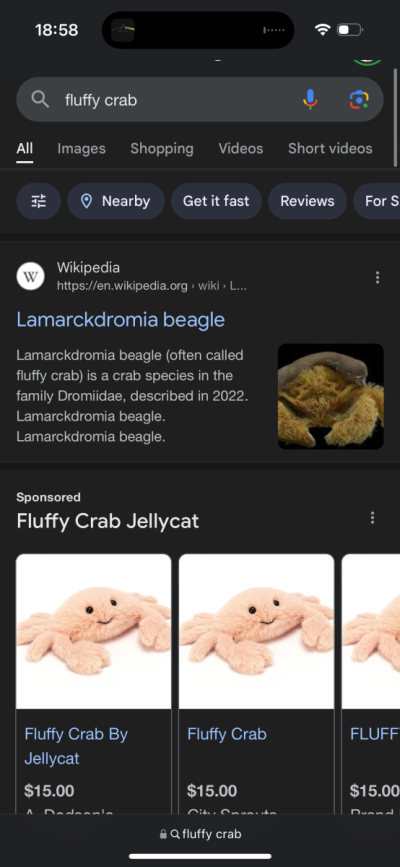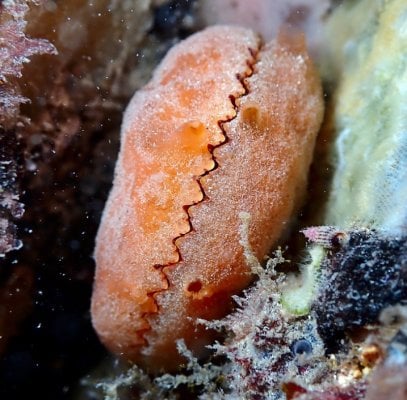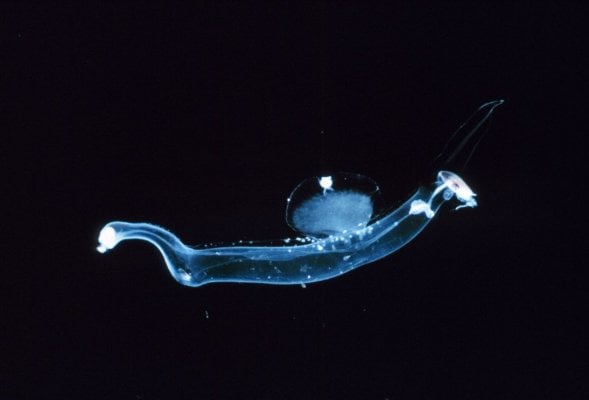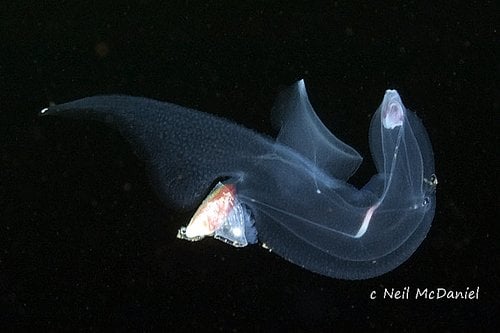Obviously a bit more common, but Arrow Crabs are so weird

Navigation
Install the app
How to install the app on iOS
Follow along with the video below to see how to install our site as a web app on your home screen.
Note: This feature may not be available in some browsers.
More options
You are using an out of date browser. It may not display this or other websites correctly.
You should upgrade or use an alternative browser.
You should upgrade or use an alternative browser.
Show me some weird animals
- Thread starter BristleWormHater
- Start date
- Tagged users None
vetteguy53081
Well known Member and monster tank lover
View Badges
Partner Member 2024
Excellence Award
Reef Tank 365
RGB
Article Contributor
Tampa Bay Reef Keepers
West Palm Beach Reefer
Hospitality Award
Ocala Reef Club Member
305 Reef Club
Wisco Reefers
Midwest Reefer
Fish Medic
MAC of SW Florida
Rock Pool Reef Keepers
R2R Secret Santa 2023
My Tank Thread
My Aquarium Showcase
Sugar Glider

Don't look at the snake lolI could have gone my whole life without seeing this...Thank you for the nightmares.

The times I tell members that they have isopods, and most times I'll warn them about googling photos.....this alien isn't what you have:

Slocke
I’m pedantic, ignore me
View Badges

Excellence Award
Reef Tank 365
Photo of the Month
Article Contributor
My Tank Thread
My Aquarium Showcase
To mimic a camel spider I believe which isn’t a spider but also very weirdTailed horned viper. Tail looks and it can move it to mimic a spider.


Seen them in person. Very weird creatures.To mimic a camel spider I believe which isn’t a spider but also very weird

Wowzers the Argonaut is a Bobby DazzlerIt's not often that I find out about a new animal, since I grew up reading encyclopedias(I was weird) but I just learned about these guys

Velvet worm
Peripatoides novaezealandiae
I also learned about argonuats or paper nautilus about a month ago

Argonaut
Argonauta argo
If you know ANY weird animals please post them here! We'll see if I know them or not.
This is called an Aye-Aye…


I love this photo. I recently added 2 for the first time. It was one of the best purchases because they are eating the bristleworms!Obviously a bit more common, but Arrow Crabs are so weird
- Joined
- Dec 8, 2017
- Messages
- 2,200
- Reaction score
- 4,115
Two pages and no one has mentioned the Octopus!
Weird, and SMART! If octopuses lived longer and could write things down so other octopuses could learn from them, we'd all be speaking Greek right now!
Weird, and SMART! If octopuses lived longer and could write things down so other octopuses could learn from them, we'd all be speaking Greek right now!
Not rare but I find flat worms very interesting. The way they can shape is just cool
Even this one killing euphylia was cool to watch. It was like watching clouds change and picking out shapes. Sorry for the long vid it was just interesting. To me it looks like it has bunny ears at the end
Even this one killing euphylia was cool to watch. It was like watching clouds change and picking out shapes. Sorry for the long vid it was just interesting. To me it looks like it has bunny ears at the end
Sorry, I don't have photos; this post is too long as is haha.
Some weird critters:
Longfin damselfish, Stegastes diencaeus - they farm algae and ranch domesticated mysid shrimp.
Hatchet-type mantis shrimp, Acanthosquilla derijardi.
Eusocial Snapping Shrimp species (Synalpheus spp.; Synalpheus regalis is the best known, but there are reportedly a couple other species from the genus which exhibit this behavior as well) - these form ant-like colonies with one reproductive queen and several "workers" in the colony; they also live inside of and defend a home sponge.
Semi-terrestrial Shrimp species (Merguia spp.; M. oligodon and M. rhizophorae) which can climb trees and hop away from danger.
Tonna galea is a very large sea snail that eats sea cucumbers and reportedly leaves a bioluminescent trail.
Yellow-coated Clusterwink, Hinea brasiliana - they have a bioluminescent mantle and a specially designed shell; when they glow (typically glowing when disturbed), their shell diffuses the blue-green light they produce, and their entire shell lights up as a result.
Helmet/Shingle Urchin, Colobocentrotus atratus - this one's pretty straightforward when you see a pic of them.
Swimming Anemones - the best known example in the hobby is Boloceroides mcmurrichi, but there are a few others that swim too.
Shaggy Frogfish, Antennarius hispidus, has a bioluminescent lure, and Hairy Frogfish, Antennarius striatus, has a biofluorescent lure.
Paguritta species are filter-feeding, sessile hermit crabs that live in tubes in corals.
Salps.
Siphonophores.
Fried-egg Jellyfish, Cotylorhiza tuberculata:
"Its sting is so mild that the tentacles sometimes provide shelter to small fish in the open ocean."**
"Sometimes small animals like crabs hitch a ride on top of and inside the jellyfish’s bell, tucked away from the stingers.2"**
**Source:

 oceana.org
oceana.org
Longnose Walking Batfish, Ogcocephalus corniger.
Pancake Batfish, Halieutichthys aculeatus.
Fluffy Crab, Lamarckdromia beagle.
Doughboy Scallop, Mimachlamys asperrima - these are known for having sponge grow all over their shell, so you can pretty well only see their mantle (the honestly look kind of like a hamburger).
Trophodiscus species, which are aboral-brooding starfish (they literally brood the baby sea stars on their top-sides).
Glass sponges which build reefs.
Carnivorous tunicates, sponges, and bivalves (mostly/exclusively found in the deep-sea).
Melibe species - predatory nudibranchs with massive mouths.
Male and female deep-sea anglerfish:
"An even more unusual and distinctive characteristic of many anglerfish species is related to their mode of reproduction. The free-swimming tiny male anglerfish can sniff the female’s waterborne pheromones and latch itself onto the female with its sharp teeth. While in some species, male attachment to females occurs temporarily and does not involve fusion of tissues, in other species, the male releases enzymes that dissolve the female’s tissue around his mouth, leading to anatomical joining of the male and female tissues [1]—a naturally occurring form of parabiosis [12] (see Figure 1). Thereafter, the male loses its eyes, fins, and internal organs, except for its testes. Its blood system fuses with that of the female host, and from that point on it receives all its nutrients via the joined circulatory system."*
*Source:

 www.ncbi.nlm.nih.gov
www.ncbi.nlm.nih.gov
(There are a ton of odd deep sea creatures).
Giant isopods (Bathynomus species), giant amphipods (Alicella gigantea), giant copepods (Pennella balaenopterae - a parasite of fin whales), giants ostracods (Gigantocypris species), etc.
Micro-predator and parasitic isopods (the Tongue-eating Louse, Cymothoa exigua, is a great example).
Clam Shrimp.
Tadpole Shrimp (Triops species).
Bagworm Moth (Psychidae) caterpillars.
Junk Bug/Lacewing (Chrysopidae) larvae.
Case-building Caddisfly (Trichoptera) larvae.
Bagheera kiplingi - the herbivorous spider.
Diving Ants, Colobopsis schmitzi - these dive into the digestive fluids of carnivorous pitcher plants to fish out trapped bugs to eat.
Intertidal Ants, Polyrhachis sokolova - these nest in mangroves, and their colonies are completely submerged at high tide; they can swim as needed.
Nomadic Mushroom Harvester Ants, Euprenolepis procera - these literally travel around like army ants foraging for mushrooms to feed on; they're fungivorous.
Honeypot Ants, Myrmecocystus species - these are famous for their repletes, which are ants that basically store food for the colony to survive times of famine; the color of the "Honeypot" replete changes with the color of food/drink fed.
Turtle Ants, Cephalotes species - the soldiers of these ants have flattened, armored heads and literally block the entrances to their nests in the trees with their own heads to control entry/exit.
Striped sheep - yes, these are real, albeit quite rare at the moment.
Frigate Birds (the males in particular).
Sage Grouse (again, particularly the males).
Death-feigning Beetles.
Ant-mimic spiders and beetles.
Okapi.
Alligator Snapping Turtle.
Mata Mata/Matamata Turtle.
Jackson's Chameleon - these have three horns like a triceratops.
Pangolins.
Indicine cattle (Zebu cows).
Some weird critters:
Longfin damselfish, Stegastes diencaeus - they farm algae and ranch domesticated mysid shrimp.
Hatchet-type mantis shrimp, Acanthosquilla derijardi.
Eusocial Snapping Shrimp species (Synalpheus spp.; Synalpheus regalis is the best known, but there are reportedly a couple other species from the genus which exhibit this behavior as well) - these form ant-like colonies with one reproductive queen and several "workers" in the colony; they also live inside of and defend a home sponge.
Semi-terrestrial Shrimp species (Merguia spp.; M. oligodon and M. rhizophorae) which can climb trees and hop away from danger.
Tonna galea is a very large sea snail that eats sea cucumbers and reportedly leaves a bioluminescent trail.
Yellow-coated Clusterwink, Hinea brasiliana - they have a bioluminescent mantle and a specially designed shell; when they glow (typically glowing when disturbed), their shell diffuses the blue-green light they produce, and their entire shell lights up as a result.
Helmet/Shingle Urchin, Colobocentrotus atratus - this one's pretty straightforward when you see a pic of them.
Swimming Anemones - the best known example in the hobby is Boloceroides mcmurrichi, but there are a few others that swim too.
Shaggy Frogfish, Antennarius hispidus, has a bioluminescent lure, and Hairy Frogfish, Antennarius striatus, has a biofluorescent lure.
Paguritta species are filter-feeding, sessile hermit crabs that live in tubes in corals.
Salps.
Siphonophores.
Fried-egg Jellyfish, Cotylorhiza tuberculata:
"Its sting is so mild that the tentacles sometimes provide shelter to small fish in the open ocean."**
"Sometimes small animals like crabs hitch a ride on top of and inside the jellyfish’s bell, tucked away from the stingers.2"**
**Source:
Fried Egg Jellyfish | Oceana
The fried egg jellyfish, primarily found in the Mediterranean, Adriatic, and Aegean Seas, only lives for about half a year, from summer to winter. Learn more.
Longnose Walking Batfish, Ogcocephalus corniger.
Pancake Batfish, Halieutichthys aculeatus.
Fluffy Crab, Lamarckdromia beagle.
Doughboy Scallop, Mimachlamys asperrima - these are known for having sponge grow all over their shell, so you can pretty well only see their mantle (the honestly look kind of like a hamburger).
Trophodiscus species, which are aboral-brooding starfish (they literally brood the baby sea stars on their top-sides).
Glass sponges which build reefs.
Carnivorous tunicates, sponges, and bivalves (mostly/exclusively found in the deep-sea).
Melibe species - predatory nudibranchs with massive mouths.
Male and female deep-sea anglerfish:
"An even more unusual and distinctive characteristic of many anglerfish species is related to their mode of reproduction. The free-swimming tiny male anglerfish can sniff the female’s waterborne pheromones and latch itself onto the female with its sharp teeth. While in some species, male attachment to females occurs temporarily and does not involve fusion of tissues, in other species, the male releases enzymes that dissolve the female’s tissue around his mouth, leading to anatomical joining of the male and female tissues [1]—a naturally occurring form of parabiosis [12] (see Figure 1). Thereafter, the male loses its eyes, fins, and internal organs, except for its testes. Its blood system fuses with that of the female host, and from that point on it receives all its nutrients via the joined circulatory system."*
*Source:

Histocompatibility and Reproduction: Lessons from the Anglerfish
Reproduction in certain deep-sea anglerfishes involves the permanent attachment of dwarf males to much larger females and fusion of their tissues leading to the establishment of a shared circulatory system. This unusual phenomenon of sexual parasitism ...
(There are a ton of odd deep sea creatures).
Giant isopods (Bathynomus species), giant amphipods (Alicella gigantea), giant copepods (Pennella balaenopterae - a parasite of fin whales), giants ostracods (Gigantocypris species), etc.
Micro-predator and parasitic isopods (the Tongue-eating Louse, Cymothoa exigua, is a great example).
Clam Shrimp.
Tadpole Shrimp (Triops species).
Bagworm Moth (Psychidae) caterpillars.
Junk Bug/Lacewing (Chrysopidae) larvae.
Case-building Caddisfly (Trichoptera) larvae.
Bagheera kiplingi - the herbivorous spider.
Diving Ants, Colobopsis schmitzi - these dive into the digestive fluids of carnivorous pitcher plants to fish out trapped bugs to eat.
Intertidal Ants, Polyrhachis sokolova - these nest in mangroves, and their colonies are completely submerged at high tide; they can swim as needed.
Nomadic Mushroom Harvester Ants, Euprenolepis procera - these literally travel around like army ants foraging for mushrooms to feed on; they're fungivorous.
Honeypot Ants, Myrmecocystus species - these are famous for their repletes, which are ants that basically store food for the colony to survive times of famine; the color of the "Honeypot" replete changes with the color of food/drink fed.
Turtle Ants, Cephalotes species - the soldiers of these ants have flattened, armored heads and literally block the entrances to their nests in the trees with their own heads to control entry/exit.
Striped sheep - yes, these are real, albeit quite rare at the moment.
Frigate Birds (the males in particular).
Sage Grouse (again, particularly the males).
Death-feigning Beetles.
Ant-mimic spiders and beetles.
Okapi.
Alligator Snapping Turtle.
Mata Mata/Matamata Turtle.
Jackson's Chameleon - these have three horns like a triceratops.
Pangolins.
Indicine cattle (Zebu cows).
Slocke
I’m pedantic, ignore me
View Badges

Excellence Award
Reef Tank 365
Photo of the Month
Article Contributor
My Tank Thread
My Aquarium Showcase
Great list! I knew about half I think. Maybe more with those easy terrestrial animals


Is it as cool a domesticated Elands?

So ants are taking over the ocean tooSorry, I don't have photos; this post is too long as is haha.
Some weird critters:
Longfin damselfish, Stegastes diencaeus - they farm algae and ranch domesticated mysid shrimp.
Hatchet-type mantis shrimp, Acanthosquilla derijardi.
Eusocial Snapping Shrimp species (Synalpheus spp.; Synalpheus regalis is the best known, but there are reportedly a couple other species from the genus which exhibit this behavior as well) - these form ant-like colonies with one reproductive queen and several "workers" in the colony; they also live inside of and defend a home sponge.
So semi-arborealSemi-terrestrial Shrimp species (Merguia spp.; M. oligodon and M. rhizophorae) which can climb trees and hop away from danger.
Actually those are the eggs of the lizard men that control the governmentTonna galea is a very large sea snail that eats sea cucumbers and reportedly leaves a bioluminescent trail.
Yellow-coated Clusterwink, Hinea brasiliana - they have a bioluminescent mantle and a specially designed shell; when they glow (typically glowing when disturbed), their shell diffuses the blue-green light they produce, and their entire shell lights up as a result.
Helmet/Shingle Urchin, Colobocentrotus atratus - this one's pretty straightforward when you see a pic of them.
Looks fake to meSwimming Anemones - the best known example in the hobby is Boloceroides mcmurrichi, but there are a few others that swim too.
Shaggy Frogfish, Antennarius hispidus, has a bioluminescent lure, and Hairy Frogfish, Antennarius striatus, has a biofluorescent lure.
Paguritta species are filter-feeding, sessile hermit crabs that live in tubes in corals.
Salps.
Siphonophores.
Fried-egg Jellyfish, Cotylorhiza tuberculata:
"Its sting is so mild that the tentacles sometimes provide shelter to small fish in the open ocean."**
"Sometimes small animals like crabs hitch a ride on top of and inside the jellyfish’s bell, tucked away from the stingers.2"**
**Source:

Fried Egg Jellyfish | Oceana
The fried egg jellyfish, primarily found in the Mediterranean, Adriatic, and Aegean Seas, only lives for about half a year, from summer to winter. Learn more.oceana.org
Longnose Walking Batfish, Ogcocephalus corniger.
Pancake Batfish, Halieutichthys aculeatus.
Fluffy Crab, Lamarckdromia beagle.

That’s a jelly doughnut actually, Crustlam jamus. Pretty common in most Dunkin DonutsDoughboy Scallop, Mimachlamys asperrima - these are known for having sponge grow all over their shell, so you can pretty well only see their mantle (the honestly look kind of like a hamburger).

HexactinellidTrophodiscus species, which are aboral-brooding starfish (they literally brood the baby sea stars on their top-sides).
Glass sponges which build reefs.
Sea monkeys!!Carnivorous tunicates, sponges, and bivalves (mostly/exclusively found in the deep-sea).
Melibe species - predatory nudibranchs with massive mouths.
Male and female deep-sea anglerfish:
"An even more unusual and distinctive characteristic of many anglerfish species is related to their mode of reproduction. The free-swimming tiny male anglerfish can sniff the female’s waterborne pheromones and latch itself onto the female with its sharp teeth. While in some species, male attachment to females occurs temporarily and does not involve fusion of tissues, in other species, the male releases enzymes that dissolve the female’s tissue around his mouth, leading to anatomical joining of the male and female tissues [1]—a naturally occurring form of parabiosis [12] (see Figure 1). Thereafter, the male loses its eyes, fins, and internal organs, except for its testes. Its blood system fuses with that of the female host, and from that point on it receives all its nutrients via the joined circulatory system."*
*Source:

Histocompatibility and Reproduction: Lessons from the Anglerfish
Reproduction in certain deep-sea anglerfishes involves the permanent attachment of dwarf males to much larger females and fusion of their tissues leading to the establishment of a shared circulatory system. This unusual phenomenon of sexual parasitism ...www.ncbi.nlm.nih.gov
(There are a ton of odd deep sea creatures).
Giant isopods (Bathynomus species), giant amphipods (Alicella gigantea), giant copepods (Pennella balaenopterae - a parasite of fin whales), giants ostracods (Gigantocypris species), etc.
Micro-predator and parasitic isopods (the Tongue-eating Louse, Cymothoa exigua, is a great example).
Clam Shrimp.
Tadpole Shrimp (Triops species).
Those bite. I do not like themBagworm Moth (Psychidae) caterpillars.
Junk Bug/Lacewing (Chrysopidae) larvae.
Annoyingly Okapi means giraffe in OtjiherreroCase-building Caddisfly (Trichoptera) larvae.
Bagheera kiplingi - the herbivorous spider.
Diving Ants, Colobopsis schmitzi - these dive into the digestive fluids of carnivorous pitcher plants to fish out trapped bugs to eat.
Intertidal Ants, Polyrhachis sokolova - these nest in mangroves, and their colonies are completely submerged at high tide; they can swim as needed.
Nomadic Mushroom Harvester Ants, Euprenolepis procera - these literally travel around like army ants foraging for mushrooms to feed on; they're fungivorous.
Honeypot Ants, Myrmecocystus species - these are famous for their repletes, which are ants that basically store food for the colony to survive times of famine; the color of the "Honeypot" replete changes with the color of food/drink fed.
Turtle Ants, Cephalotes species - the soldiers of these ants have flattened, armored heads and literally block the entrances to their nests in the trees with their own heads to control entry/exit.
Striped sheep - yes, these are real, albeit quite rare at the moment.
Frigate Birds (the males in particular).
Sage Grouse (again, particularly the males).
Death-feigning Beetles.
Ant-mimic spiders and beetles.
Okapi.
I find the common more interestingAlligator Snapping Turtle.
Now that’s a cool turtleMata Mata/Matamata Turtle.
Love theMJackson's Chameleon - these have three horns like a triceratops.
The most valuable creature in the world. I worked with some rescues. I can’t tell you where though because it’s literally illegalPangolins.
MhhhIndicine cattle (Zebu cows).
Is it as cool a domesticated Elands?

Last edited:
Slocke
I’m pedantic, ignore me
View Badges

Excellence Award
Reef Tank 365
Photo of the Month
Article Contributor
My Tank Thread
My Aquarium Showcase
Looks like I have to up my game. Time for the Pipa pipa. Yes those are baby frogs emerging from its back.

Oh and how about the satanic nightjar, Eurostopodus diabolicus. The second creepiest of birds named for their cry if I remember correctly. The first is of course the horned screamer, Anhima cornuta.

How about a fish that can survive the kalahari desert. The African lungfish, Protopterus annectens, one of my favorites when I lived down there.
I wish I saw a golden rolling spider though, Carparachne aureoflava. Which moves by cartwheeling!
Chrysopelea spp are snakes thatfly glide.
That’s a quick top of the head list
Oh and how about the satanic nightjar, Eurostopodus diabolicus. The second creepiest of birds named for their cry if I remember correctly. The first is of course the horned screamer, Anhima cornuta.
How about a fish that can survive the kalahari desert. The African lungfish, Protopterus annectens, one of my favorites when I lived down there.
I wish I saw a golden rolling spider though, Carparachne aureoflava. Which moves by cartwheeling!
Chrysopelea spp are snakes that
That’s a quick top of the head list
I'll get through this whole pokedex someday, but semi-terrestrial shrimp made me come to a full stop. Imagine walking around and just seeing a shrimp with no prior knowledge that these exist, I would second guess what medicine I took in the morning.Sorry, I don't have photos; this post is too long as is haha.
Some weird critters:
Longfin damselfish, Stegastes diencaeus - they farm algae and ranch domesticated mysid shrimp.
Hatchet-type mantis shrimp, Acanthosquilla derijardi.
Eusocial Snapping Shrimp species (Synalpheus spp.; Synalpheus regalis is the best known, but there are reportedly a couple other species from the genus which exhibit this behavior as well) - these form ant-like colonies with one reproductive queen and several "workers" in the colony; they also live inside of and defend a home sponge.
Semi-terrestrial Shrimp species (Merguia spp.; M. oligodon and M. rhizophorae) which can climb trees and hop away from danger.
Tonna galea is a very large sea snail that eats sea cucumbers and reportedly leaves a bioluminescent trail.
Yellow-coated Clusterwink, Hinea brasiliana - they have a bioluminescent mantle and a specially designed shell; when they glow (typically glowing when disturbed), their shell diffuses the blue-green light they produce, and their entire shell lights up as a result.
Helmet/Shingle Urchin, Colobocentrotus atratus - this one's pretty straightforward when you see a pic of them.
Swimming Anemones - the best known example in the hobby is Boloceroides mcmurrichi, but there are a few others that swim too.
Shaggy Frogfish, Antennarius hispidus, has a bioluminescent lure, and Hairy Frogfish, Antennarius striatus, has a biofluorescent lure.
Paguritta species are filter-feeding, sessile hermit crabs that live in tubes in corals.
Salps.
Siphonophores.
Fried-egg Jellyfish, Cotylorhiza tuberculata:
"Its sting is so mild that the tentacles sometimes provide shelter to small fish in the open ocean."**
"Sometimes small animals like crabs hitch a ride on top of and inside the jellyfish’s bell, tucked away from the stingers.2"**
**Source:

Fried Egg Jellyfish | Oceana
The fried egg jellyfish, primarily found in the Mediterranean, Adriatic, and Aegean Seas, only lives for about half a year, from summer to winter. Learn more.oceana.org
Longnose Walking Batfish, Ogcocephalus corniger.
Pancake Batfish, Halieutichthys aculeatus.
Fluffy Crab, Lamarckdromia beagle.
Doughboy Scallop, Mimachlamys asperrima - these are known for having sponge grow all over their shell, so you can pretty well only see their mantle (the honestly look kind of like a hamburger).
Trophodiscus species, which are aboral-brooding starfish (they literally brood the baby sea stars on their top-sides).
Glass sponges which build reefs.
Carnivorous tunicates, sponges, and bivalves (mostly/exclusively found in the deep-sea).
Melibe species - predatory nudibranchs with massive mouths.
Male and female deep-sea anglerfish:
"An even more unusual and distinctive characteristic of many anglerfish species is related to their mode of reproduction. The free-swimming tiny male anglerfish can sniff the female’s waterborne pheromones and latch itself onto the female with its sharp teeth. While in some species, male attachment to females occurs temporarily and does not involve fusion of tissues, in other species, the male releases enzymes that dissolve the female’s tissue around his mouth, leading to anatomical joining of the male and female tissues [1]—a naturally occurring form of parabiosis [12] (see Figure 1). Thereafter, the male loses its eyes, fins, and internal organs, except for its testes. Its blood system fuses with that of the female host, and from that point on it receives all its nutrients via the joined circulatory system."*
*Source:

Histocompatibility and Reproduction: Lessons from the Anglerfish
Reproduction in certain deep-sea anglerfishes involves the permanent attachment of dwarf males to much larger females and fusion of their tissues leading to the establishment of a shared circulatory system. This unusual phenomenon of sexual parasitism ...www.ncbi.nlm.nih.gov
(There are a ton of odd deep sea creatures).
Giant isopods (Bathynomus species), giant amphipods (Alicella gigantea), giant copepods (Pennella balaenopterae - a parasite of fin whales), giants ostracods (Gigantocypris species), etc.
Micro-predator and parasitic isopods (the Tongue-eating Louse, Cymothoa exigua, is a great example).
Clam Shrimp.
Tadpole Shrimp (Triops species).
Bagworm Moth (Psychidae) caterpillars.
Junk Bug/Lacewing (Chrysopidae) larvae.
Case-building Caddisfly (Trichoptera) larvae.
Bagheera kiplingi - the herbivorous spider.
Diving Ants, Colobopsis schmitzi - these dive into the digestive fluids of carnivorous pitcher plants to fish out trapped bugs to eat.
Intertidal Ants, Polyrhachis sokolova - these nest in mangroves, and their colonies are completely submerged at high tide; they can swim as needed.
Nomadic Mushroom Harvester Ants, Euprenolepis procera - these literally travel around like army ants foraging for mushrooms to feed on; they're fungivorous.
Honeypot Ants, Myrmecocystus species - these are famous for their repletes, which are ants that basically store food for the colony to survive times of famine; the color of the "Honeypot" replete changes with the color of food/drink fed.
Turtle Ants, Cephalotes species - the soldiers of these ants have flattened, armored heads and literally block the entrances to their nests in the trees with their own heads to control entry/exit.
Striped sheep - yes, these are real, albeit quite rare at the moment.
Frigate Birds (the males in particular).
Sage Grouse (again, particularly the males).
Death-feigning Beetles.
Ant-mimic spiders and beetles.
Okapi.
Alligator Snapping Turtle.
Mata Mata/Matamata Turtle.
Jackson's Chameleon - these have three horns like a triceratops.
Pangolins.
Indicine cattle (Zebu cows).
- Joined
- Jun 25, 2009
- Messages
- 850
- Reaction score
- 303
Thanks for posting this, informative and quite funny.
I’m very much a nerd for the weird. I could go on. Like there are a bunch of suspension feeding sea cucumbers
Oooooggghhh I hate that frog it's so grossLooks like I have to up my game. Time for the Pipa pipa. Yes those are baby frogs emerging from its back.

Oh and how about the satanic nightjar, Eurostopodus diabolicus. The second creepiest of birds named for their cry if I remember correctly. The first is of course the horned screamer, Anhima cornuta.

How about a fish that can survive the kalahari desert. The African lungfish, Protopterus annectens, one of my favorites when I lived down there.
I wish I saw a golden rolling spider though, Carparachne aureoflava. Which moves by cartwheeling!
Chrysopelea spp are snakes thatflyglide.
That’s a quick top of the head list
Similar threads
- Replies
- 5
- Views
- 86
- Replies
- 3
- Views
- 86
- Replies
- 10
- Views
- 363




















